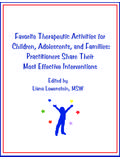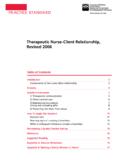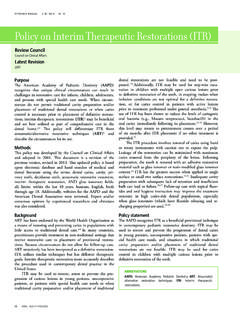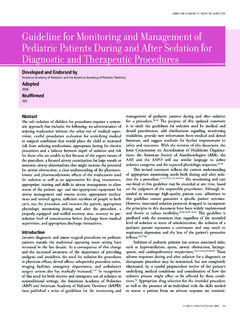Transcription of Guidelines on the Use of Therapeutic Apheresis in Clinical ...
1 Guidelines on the Use of Therapeutic Apheresis inClinical Practice Evidence-Based Approach from theWriting Committee of the American Society forApheresis: The Sixth Special IssueJoseph Schwartz,1 Jeffrey L. Winters,2 Anand Padmanabhan,3 Rasheed A. Balogun,4 Meghan Delaney,5 Michael L. Linenberger,6 Zbigniew M. Szczepiorkowski,7 Mark E. Williams,8 Yanyun Wu,9and Beth H. Shaz10,11*1 Department of Pathology and Cell Biology, Columbia University Medical Center, New York, New York2 Division of Transfusion Medicine, Mayo Clinic, Rochester, Minnesota3 BloodCenter of Wisconsin, Milwaukee, Wisconsin4 Division of Nephrology, University of Virginia, Charlottesville, Virginia5 Puget Sound Blood Center, Seattle, Washington6 Department of Medicine, Seattle Cancer Care Alliance, Seattle, Washington7 Department of Pathology and Medicine, Dartmouth-Hitchcock Medical Center, Lebanon, New Hampshire8 Department of Medicine, Beth Israel Deaconess Medical Center, Boston, Massachusetts9 Department of Laboratory Medicine, Yale University School of Medicine, New Haven, Connecticut10 New York Blood Center, New York.
2 New York11 Department of Pathology and Laboratory Medicine, Emory University School of Medicine, Atlanta, GeorgiaThe American Society for Apheresis (ASFA) JCA Special Issue Writing Committee is charged with reviewing,updating and categorizating indications for Therapeutic Apheresis . Beginning with the 2007 ASFA Special Issue(Fourth Edition), the committee has incorporated systematic review and evidence-based approach in the gradingand categorization of indications. This Sixth Edition of the ASFA Special Issue has further improved the processof using evidence-based medicine in the recommendations by consistently applying the category and GRADE system definitions, but eliminating the level of evidence criteria (from the University HealthCare Consortium)utilized in prior editions given redundancy between GRADE and University HealthCare Consortium general layout and concept of a fact sheet that was utilized in the Fourth and Fifth Editions, has beenlargely maintained in this edition.
3 Each fact sheet succinctly summarizes the evidence for the use of therapeuticapheresis in a specific disease entity. This article consists of 78 fact sheets (increased from 2010) for therapeuticindications in ASFA categories I through IV, with many diseases categorized having multiple Clinical presenta-tions/situations which are individually graded and categorized. J. Clin. Apheresis 28:145 284, Periodicals, words: Apheresis , plasma exchange, immunoadsorption, leukocytapheresis, photopheresis, categories,indications, evidence based, red blood cell exchange, LDL Apheresis , rheopheresisDisclaimer: This document contains information prepared by the American Society for Apheresis (ASFA) for the Apheresis community andthose who may require the use of Therapeutic Apheresis for their patients.
4 Although due care has been used in the preparation of this docu-ment, ASFA makes no representation or warranty, express or implied that it is free from errors or omissions, or that it is exhaustive, andexpressly disclaims all warranties, including but not limited to, warranties as to the information s quality or fitness for a particular information contained herein is not intended to supplant the Clinical judgment of qualified medical professionals. ASFA and its direc-tors, officers, employees, members, representatives, and agents accept no liability for any loss, cost, expense, injury, or damages, whetherdirect, indirect, incidental, consequential, special, or other, arising from the application of the information contained in this document forpatient care or any other use.
5 The accuracy of the information contained herein is subject to changes in circumstances after the time of pub-lication. ASFA accepts no responsibility for the accuracy and reliability of information provided by third parties.*Correspondence to: Beth H. Shaz, MD; New York Blood Center, New York, NY 10065. E-mail: 28 March 2013; Accepted 29 March 2013 Published online 19 July 2013 in Wiley Online Library( ).DOI: Wiley Periodicals, of Clinical Apheresis 28:145 284 (2013)INTRODUCTIONWith great pleasure, we present to you the AmericanSociety for Apheresis (ASFA) Special Issue 2013 (alsoknown as the Sixth Edition of the ASFA Special Issue).After more than years of engaging work and rigorouscritical review of fact sheets, we believe that this docu-ment will appeal to both practitioners of Apheresis medi-cine and other physicians who may need to utilizetherapeutic Apheresis for the care of their patients.
6 Thisthird iteration of evidence-based ASFA categories arebased upon stringent review of up-to-date literature,analysis of the quality of evidence, and strength of rec-ommendation derived from this evidence-based approach is designed to achieveseveral objectives. First, it provides uniformity to ASFA category assignment and disease discussion while mini-mizing personal bias; second, it provides the strength ofrecommendation; and last, it provides comprehensive, yetcondensed, information which could be shared withpatients and Clinical services requesting the use of thera-peutic Apheresis . This article is a compilation of all factsheets for disease entities which were assigned ASFA cat-egories I, II, III and IV. This is a notable change from prioreditions where category IV indication fact sheets werecompiled in a separate document or not published.
7 Withthe newer approach, the Sixth Edition is able to present infull detail the evidence that supports the ASFA categoryIV designation of specific disease processes in a singledocument for greater ease of use. Given the utility of thetable format used in prior editions to summarize diseasename, special condition(s), Apheresis modality(ies), ASFA category, and GRADE of recommendation, we have con-tinued to use it in this edition. Therapeutic Apheresis pro-cedures considered in this publication and included in thefact sheets are Therapeutic plasma exchange (TPE), eryth-rocytapheresis, red blood cell (RBC) exchange, thrombo-cytapheresis,leukocytapheresis,e xtracorporealphotopheresis (ECP), immunadsorption (IA), LDL aphe-resis, adsorptive cytapheresis, and 2013 JCA Special Issue Writing Committeeconsisted of 10 members from diverse fields includingTransfusion Medicine/ Apheresis , Hematology/Oncol-ogy and Nephrology, and from diverse geographiesthroughout the continental United States (US).
8 Diseasesfor which publications in the literature describe the useof Apheresis as treatment were reviewed by a primaryauthor who enumerated and distilled the literature andcreated a fact sheet summarizing the disease incidence,description, management, rationale, technical notes,volumes treated, replacement fluids used, treatment fre-quency, optimal duration of Therapeutic Apheresis , andreferences. This first draft was reviewed by two othercommittee members, followed by outside specialistreview for select fact sheets. These finalized fact sheetswere then categorized and graded. Categorization andgrading definitions were assigned in the same manneras in the Fifth Edition, but the application to each dis-ease was applied more specifically and consistently.
9 Level of evidence recommendations (criteria utilizedby the University HealthCare Consortium) were notincluded in the fact sheet given redundancy withGRADE recommendations used to evaluate the qualityof studies [1]. The number of diseases/medical condi-tions categorized increased from 68 to 78 from theJCA 2010 special edition to the current edition. Newfact sheets include Henoch-Sch onlein purpura (TPE:crescentric category III/grade 2C, severe extrarenal dis-ease III/2C), heparin induced thrombocytopenia (TPE:precardiopulmonary bypass III/2C, thrombosis III/2C),IgA nephropathy (TPE: crescentic III/2B, chronic pro-gressive III/2C), lipoprotein(a) hyperlipoproteinemia(LDL Apheresis : II/1B), peripheral vascular disease(LDL Apheresis : III/2C), sudden sensorineural hearingloss (LDL Apheresis : III/2A, rheopheresis: III/2A, TPE:III/2C), toxic epidermal necrolysis (TPE: III/2B) andvoltage gated potassium channel antibodies (TPE: II/1C).
10 Factsheets on ABO-incompatible (ABOi) solidorgan transplantation and hemolytic uremic syndrome(HUS) were separated into ABOi renal and liver trans-plantation, and atypical and infection-associated HUS,respectively. This was done to allow for a more com-plete presentation of published studies and discussionof treatment recommendations in these areas. Severalfact sheets have been significantly updated to reflectthe use of Apheresis in varied settings in the same dis-ease/medical condition. Examples include the fact sheeton ABO-compatible cardiac transplantation which nowincludes information on the use of TPE in the setting ofdesensitization in patients with high levels of HLA al-loantibodies, and in the lung allograft rejection factsheet which now includes information on the use ofTPE in the setting of humoral rejection.





